Topic 16 - Continental Drift and Plate Tectonics
1/62
There's no tags or description
Looks like no tags are added yet.
Name | Mastery | Learn | Test | Matching | Spaced |
|---|
No study sessions yet.
63 Terms
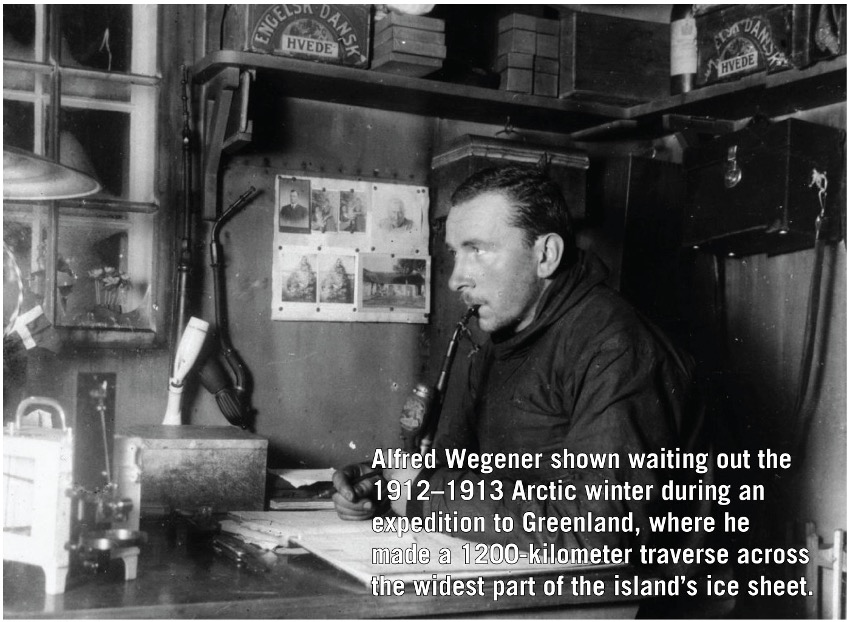
Who was Alfred Weneger?
German Meteorologist, studied the world
What did Alfred Weneger do?
He created the hypothesis of continental drift in 1915
What type of evidence did Alfred Weneger collect?
He collected many types of circumstantial evidence to suggest that the Atlantic Ocean did not exist prior to about 200 mya ago. He suggested that it had formed when an ancient supercontinent broke up shortly after 200 mya
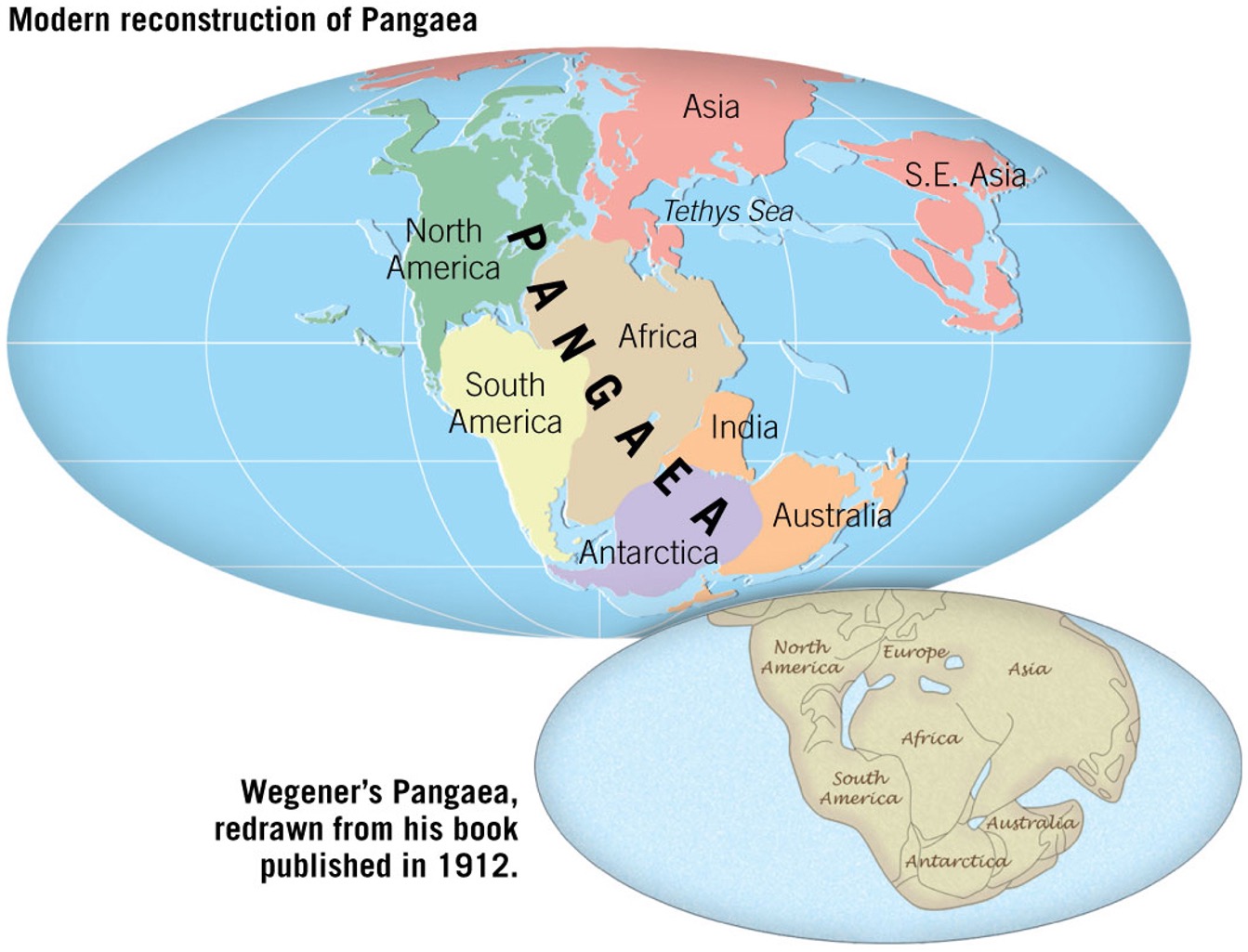
What is Pangaea?
Pangaea is the supercontinent – “pan” = all, “gaea” = earth
why does continental drift remain a hypothesis?
Continental drift remains a hypothesis – because no proof, no way to explain how this happened (takes 60 years)
where is most of the evidence for continental drift?
Most of the evidence is in the southern hemisphere continents – called Gondwanaland (aka Gondwana)
what continents make up Gondwanaland?
S. America, Australia, Africa, Antarctica, India
When was the continental drift idea accepted?
This was not accepted until 30 years after Wegener died
What is Wegener’s evidence for continental drift?
puzzle pieces, fossils, geologic features
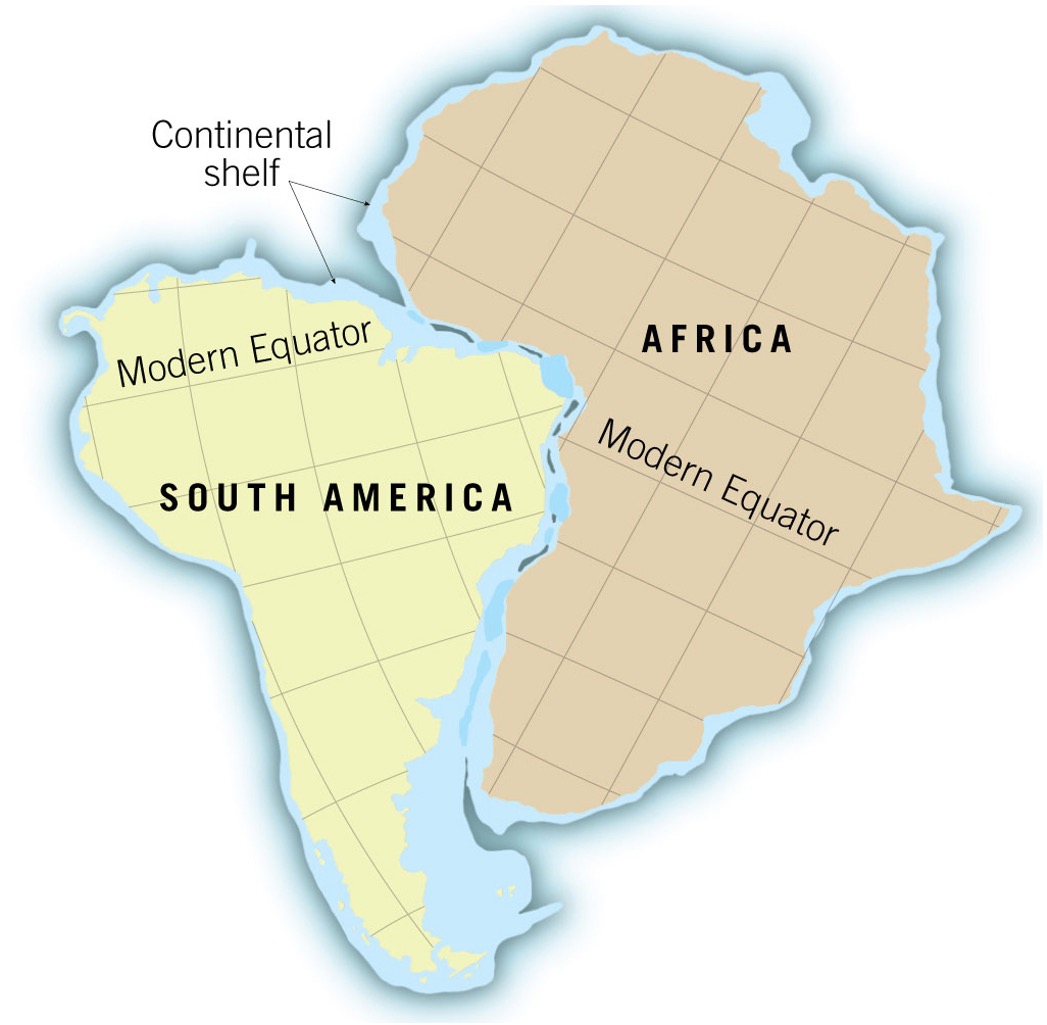
why is puzzle pieces part of Wenegers evidence?
Many coastlines fit together like puzzle pieces
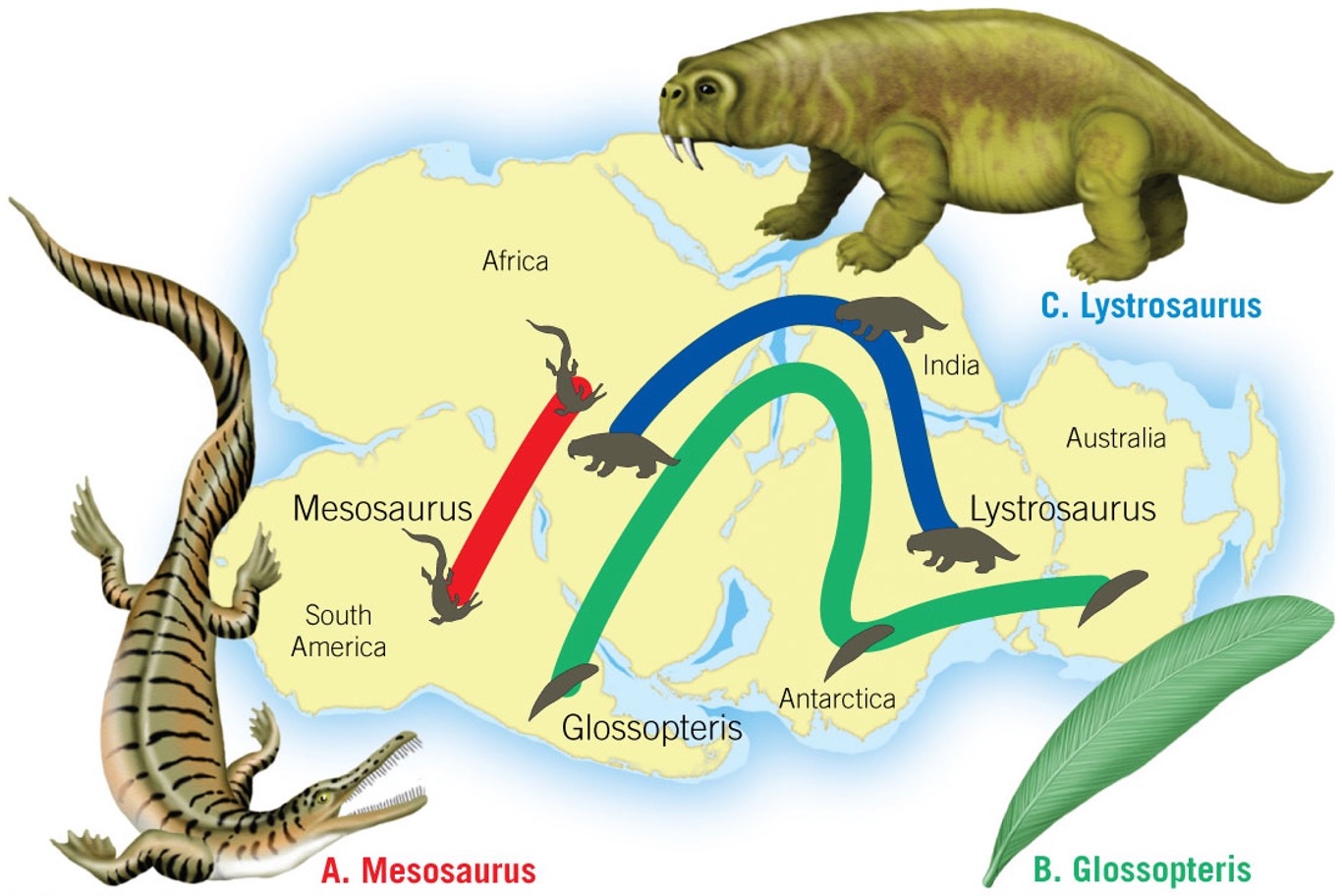
why are fossils part of Wenegers evidence?
These fossils can be explained if we reassemble Gondwana land
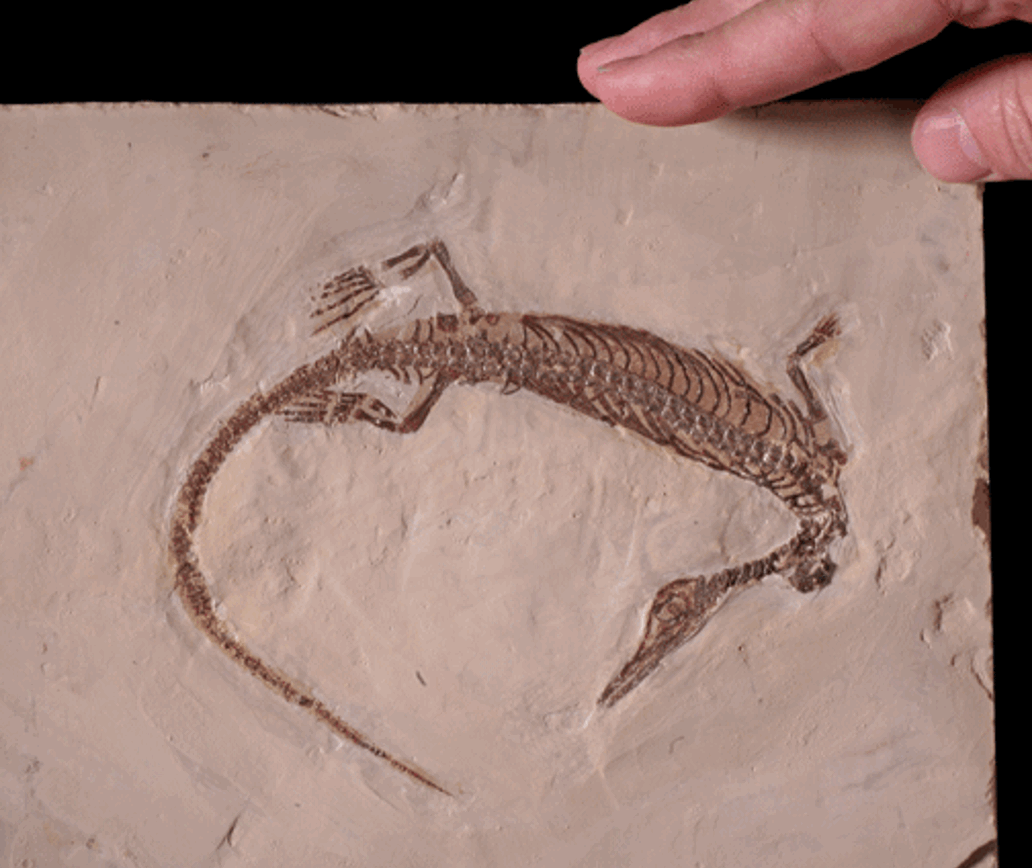
What is a mesosaurus?
Fresh water reptile
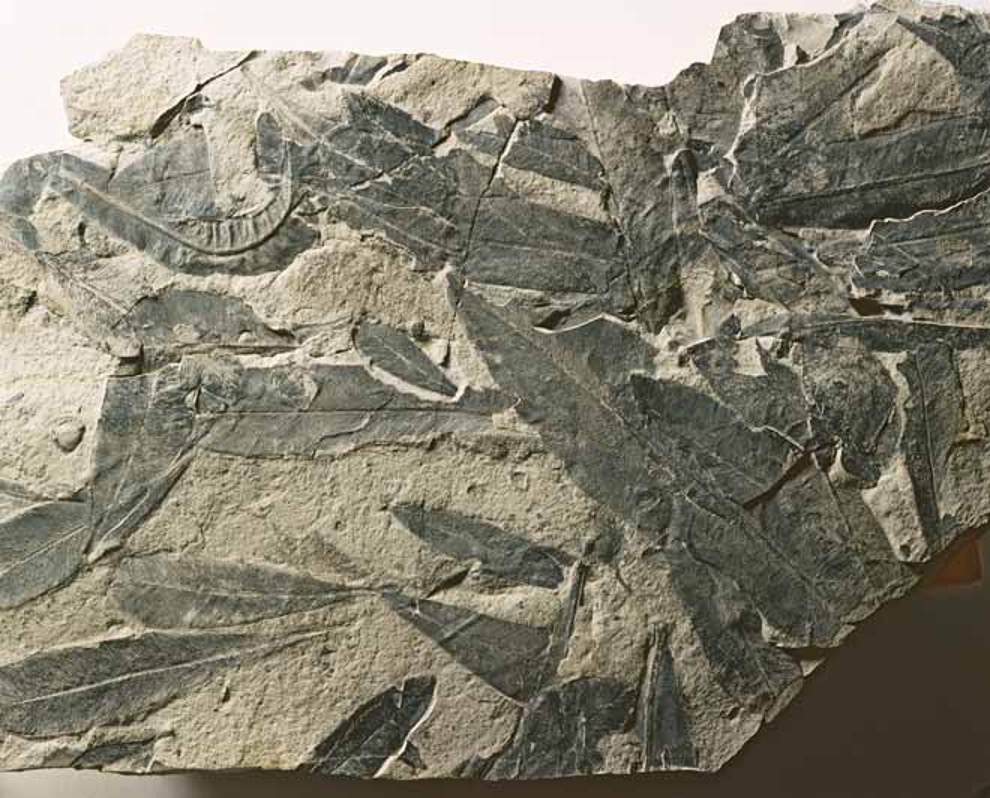
What is glossopteris?
Hardy plant that reproduced by naked seeds
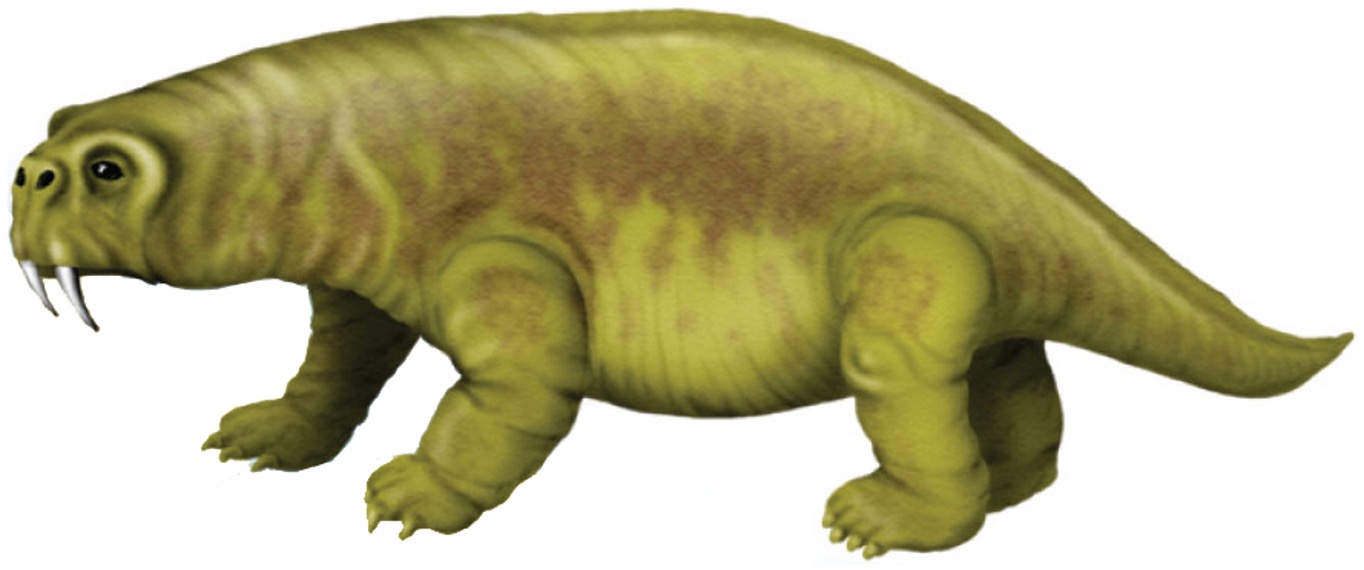
What is a lystrosaurus?
Mammal- like reptile lived on land
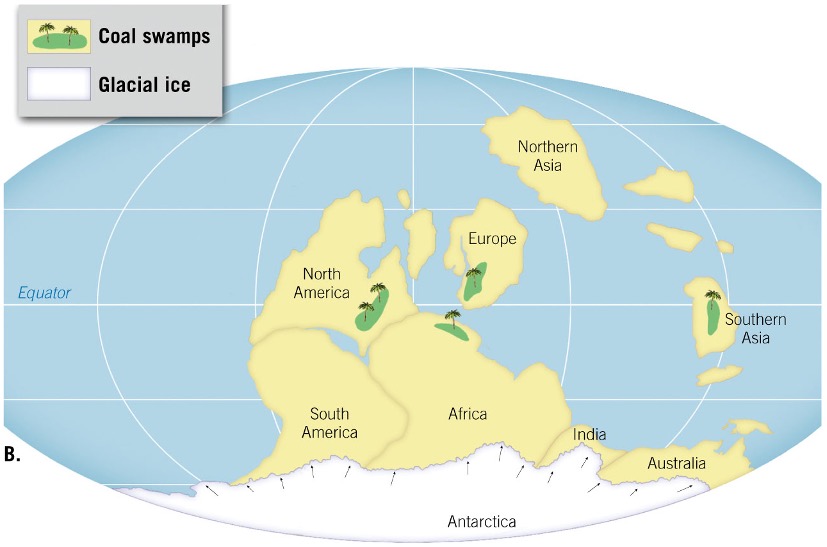
why is glacial evidence part of Wenegers evidence?
Scratches made by the ice show the direction the ice was moving. They only make sense if we reassemble Gondwana
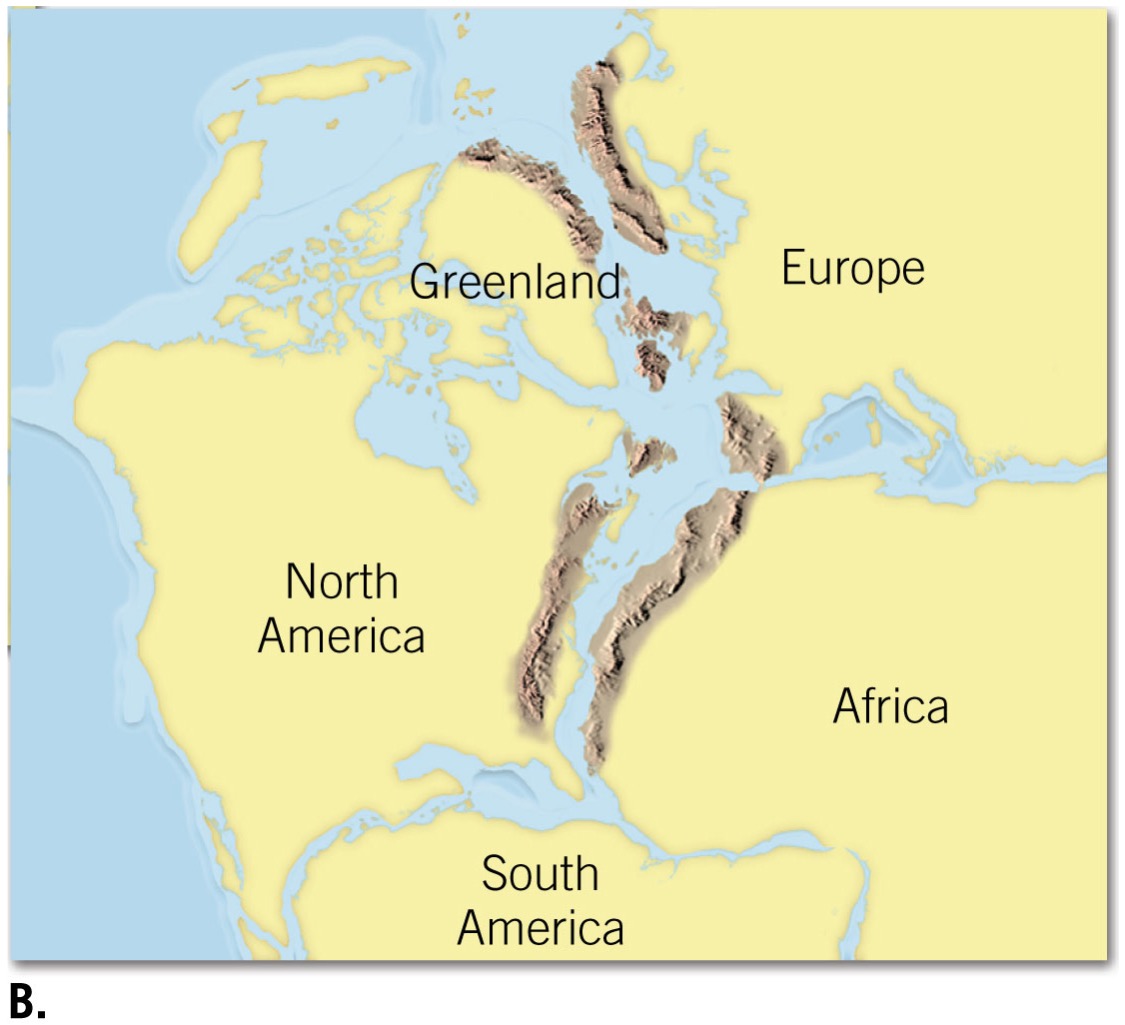
why are mountain ranges part of Wenegers evidence?
Mountain ranges on the Atlantic coasts match up if we reassemble Gondwana
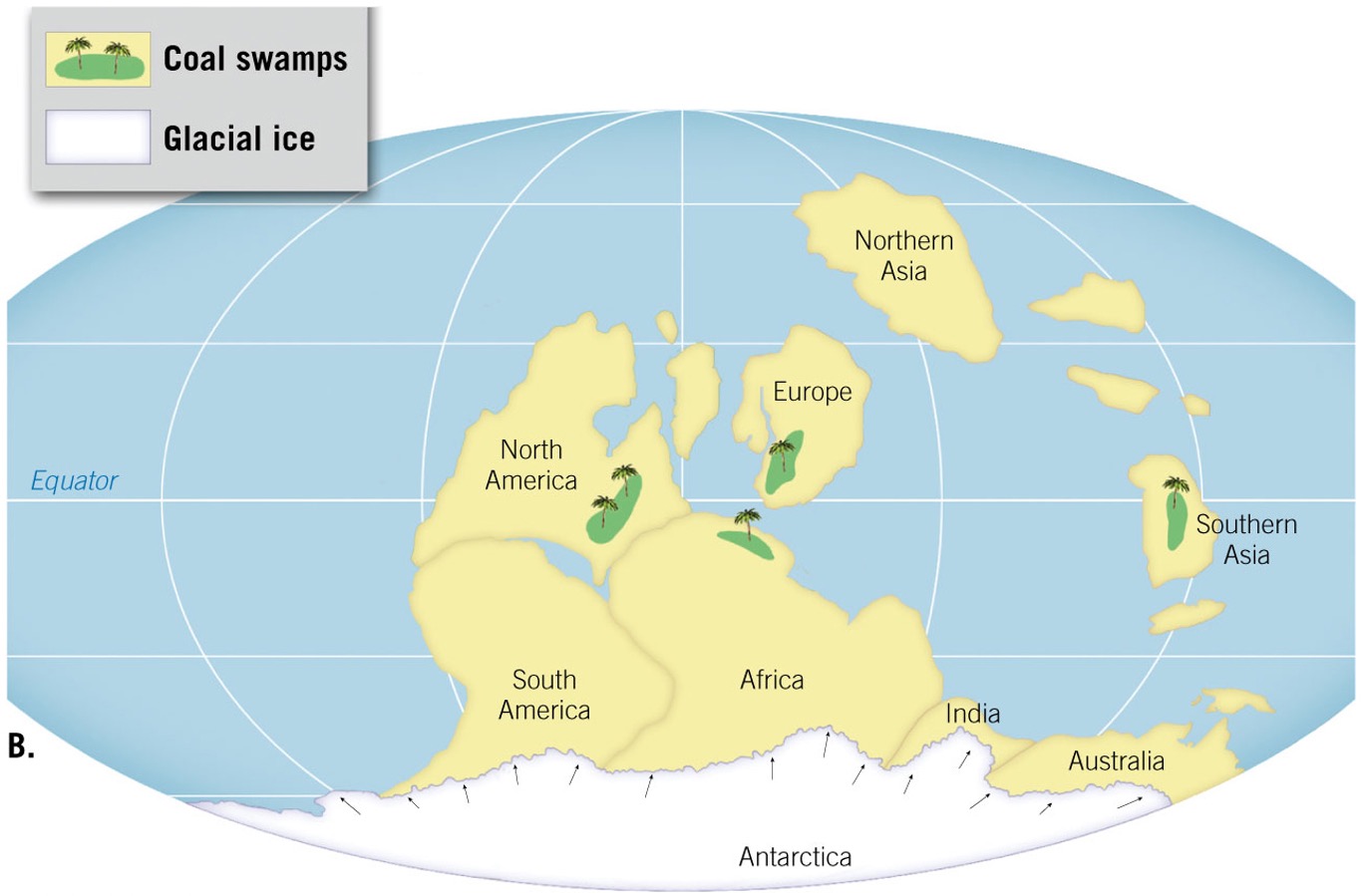
why are coal seams part of Wenegers evidence?
They formed in areas that are now not tropical. Explain this if we reassemble Pangaea (coal forms in tropical areas)
why did it take so long for geologists to accept it?
There was no way to explain how the continents had moved
what is seafloor spreading?
There are places on the seafloor that are literally spreading apart
When did the study of the sea floor increase?
during and after WWII
Who was Captain Harry Hess?
a geologist from Princeton was the captain of a ship patrolling the Pacific Ocean. He decided to make use of the time and he conducted studies of the sea floor using a brand new technology - sonar
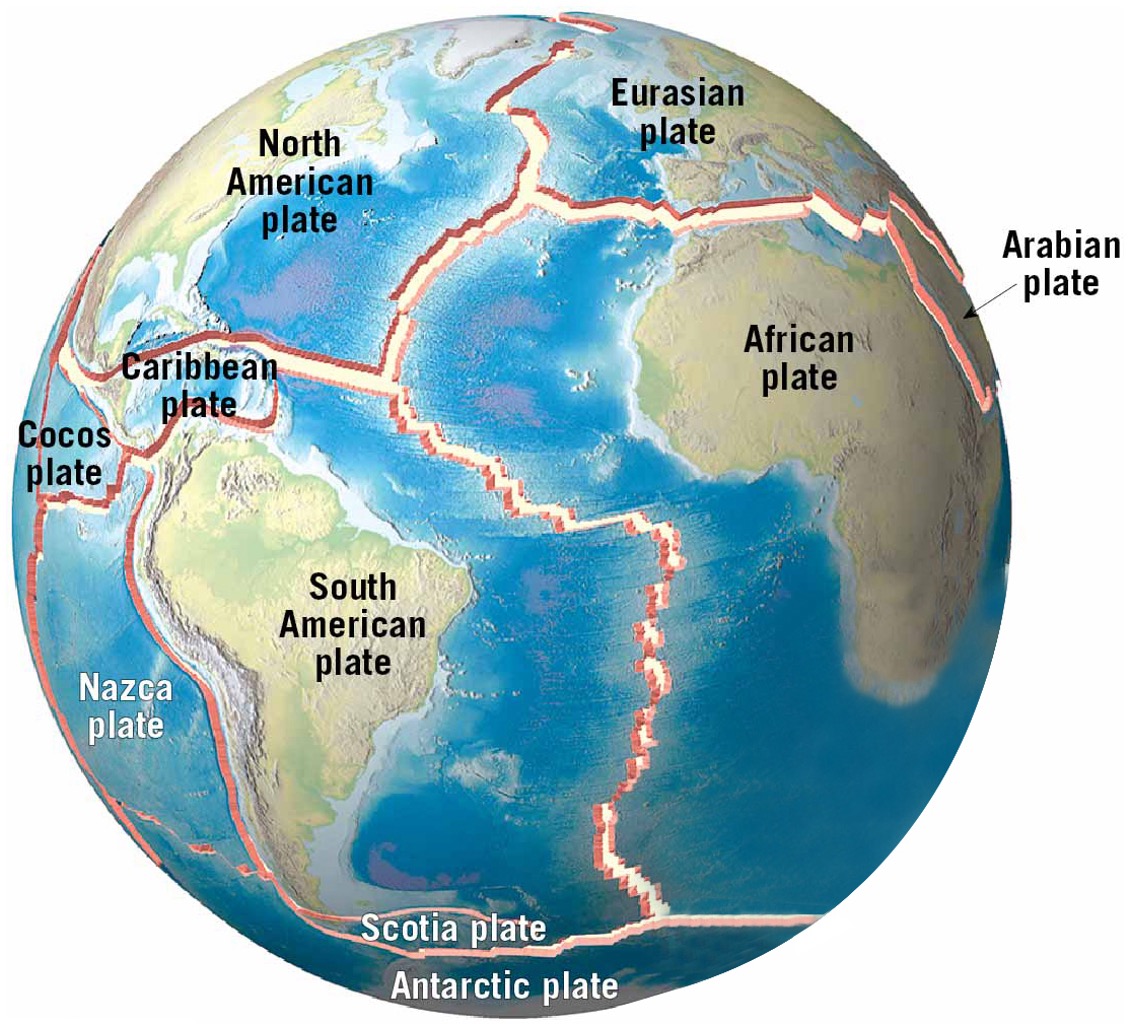
What is the mid-ocean ridge?
near the center or nearly center of the oceans is a ridge with active volcanism
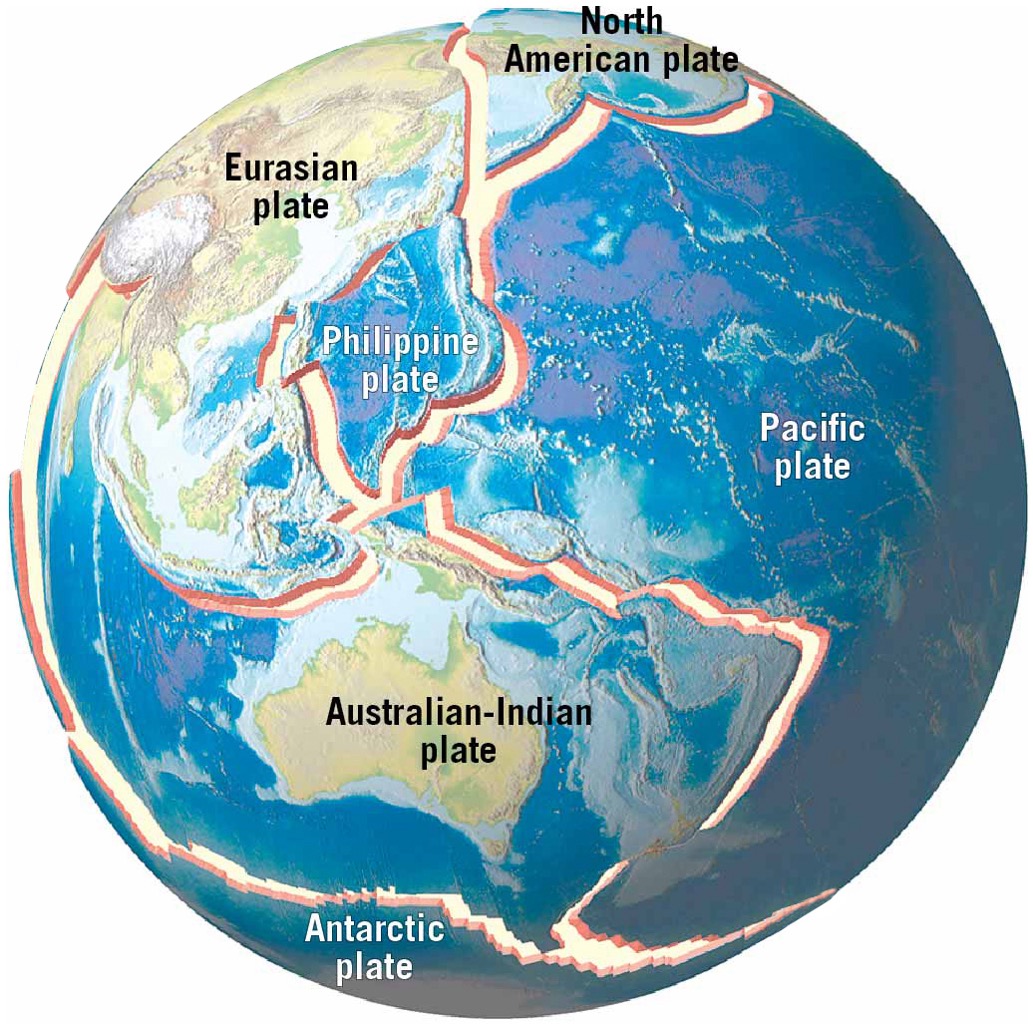
The mid ocean ridge runs ??
all the way around Earth, the ridges are all connected
What type of movement happens at the mid ocean ridge?
There is outward movement of the sea floor away from the MOR. Basically the ocean floor seems to split in two
What happens at the mid ocean ridge?
Molten material rises up at the center and fills the space formed by the spreading. This material cools, crystallizes and becomes new ocean floor
what is near the margins(edges) of the oceans?
deep ocean trenches, deep-seated earthquakes occur and volcanoes form too

Sampling of the rocks at both the ridges(center) and the trenches revealed that?
the youngest rocks are at the ridges and the oldest are at the trenches
Earth is not getting larger - if the ocean floor is growing in one place, it must be …?
getting smaller (or destroyed) in another
The oldest rocks on the ocean floor are about …?
jurassic in age
what are linear magnetic anomalies ?
these are unusual magnetic signatures recorded in the ocean crust - used to provide evidence for Sea Floor Spreading
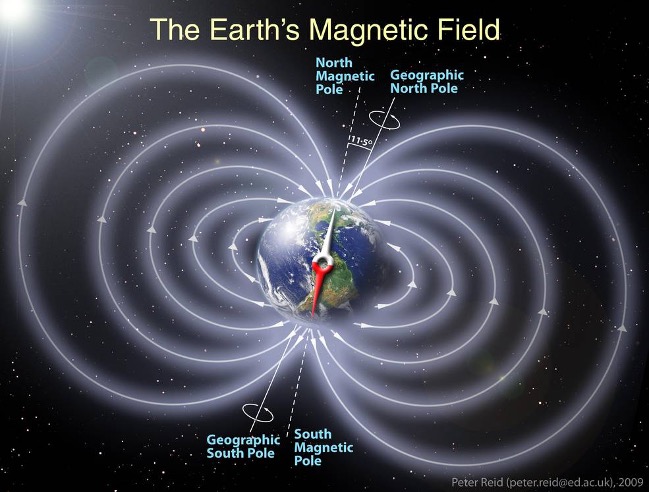
Earth is like a big magnet with a …?
north pole and a south pole
The ocean floor is made of …?
basalt which contains iron
As iron-bearing magma cools and crystallizes, it records …?
the direction of the magnetic poles at that time
what forms parallel to the mid ocean ridges?
bands of basalt form parallel

Stripes show that earths magnetic field …?
reverses over time
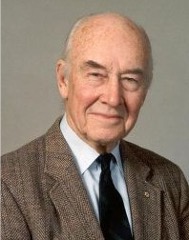
who was John Tuzo Wilson?
he was a Canadian geologist, proposed the idea of plate tectonics during the 1960’s based on the evidence from continental drift and the sea floor spreading data
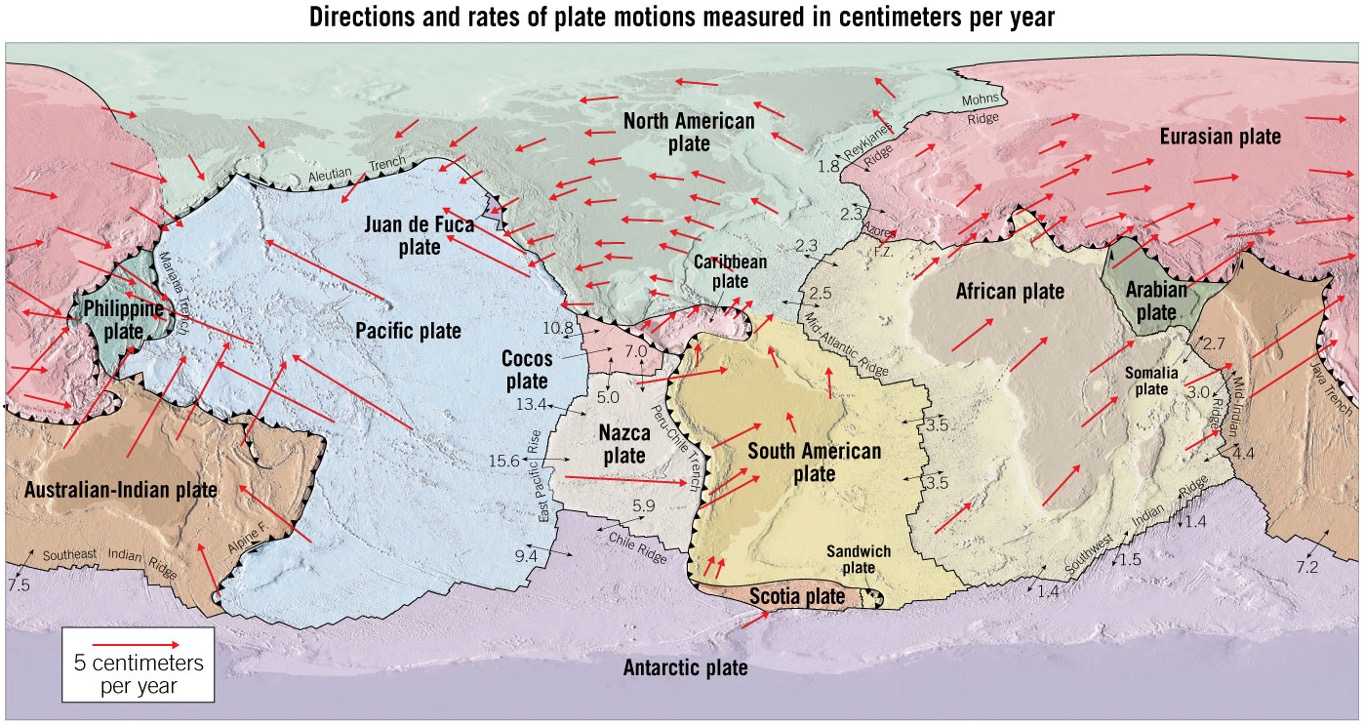
Earths lithosphere is divided/broken up into numerous segments called?
tectonic plates
What are the 7 major plates?
Pacific Plate, African Plate, South American Plate, Eurasian Plate, North American Plate, Australian-Indian Plate and Antarctic Plate
what are the intermediate-sized plates?
Nazca Plate, Philippine Plate, Caribbean Plate etc
what is a microplate?
Sandwich plate
The edge of a plate is called a ..?
boundary
what are the plates made of?
ocean crust is thinner and denser(heavier) than continental crust, ocean crust is basalt rock and continental crust is granite type rocks
what are the 3 types of plate interactions?
come together - converge, move apart - diverge or move side by side

what is a divergent boundary ?
the plates diverge or move away from each other
what happens at a divergent boundary?
new ocean crust forms, mid-ocean ridges form, volcanoes, some earthquakes
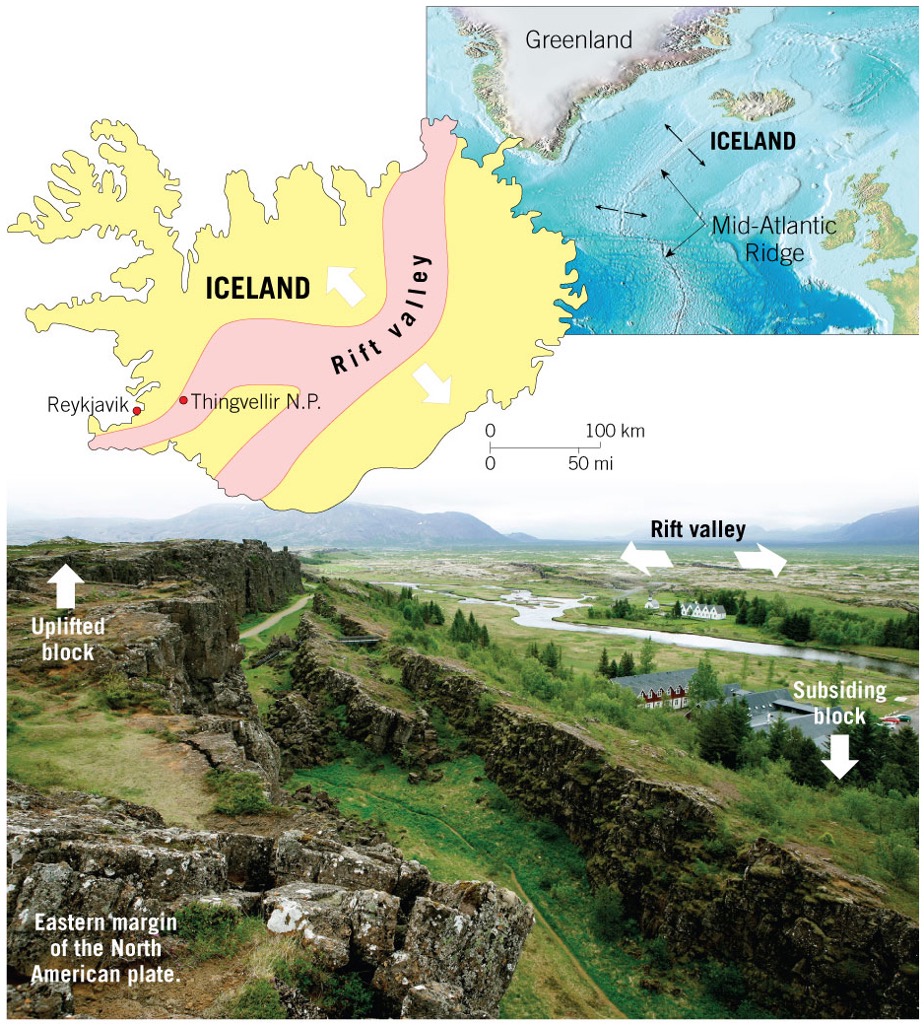
where does a divergent boundary occur?
this happens at the mid-ocean ridges, an example is Iceland - the only part of the mid ocean ridge that currently is above the water
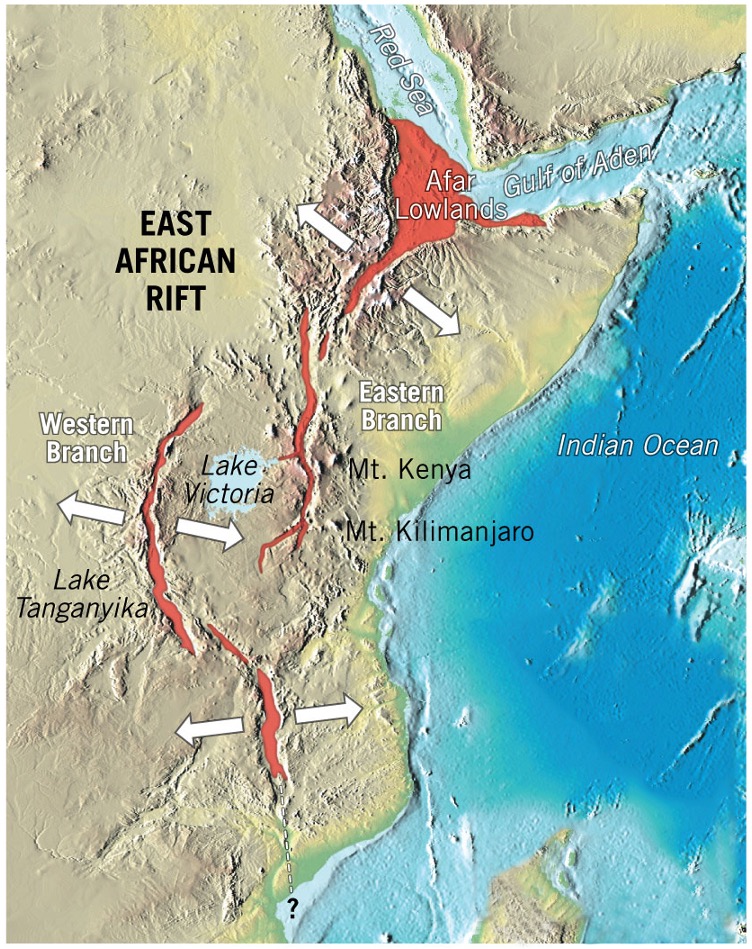
what could happen with continental rifting?
occurring in East Africa – the great rift valley, some day this area could become an isolated island, its own continent
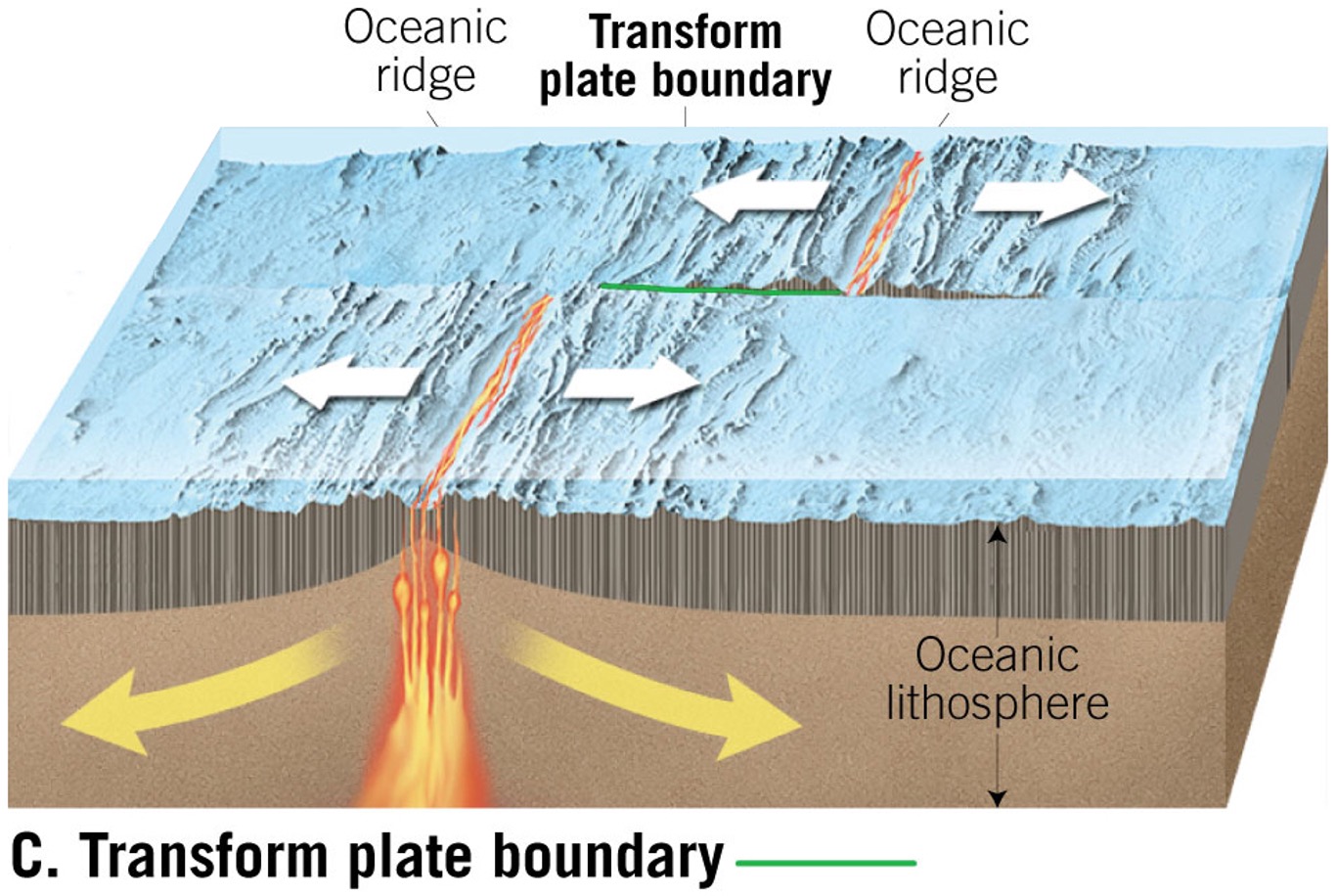
what is a transform boundary?
plates in contact with each other, they slide past in opposite directions
what happens at a transform boundary?
highly deformed rock layers, displaced landforms and features, earthquakes, no volcanoes
where does a transform boundary occur?
HO: the san Andreas fault and BO: Hispaniola (Haiti and DR)
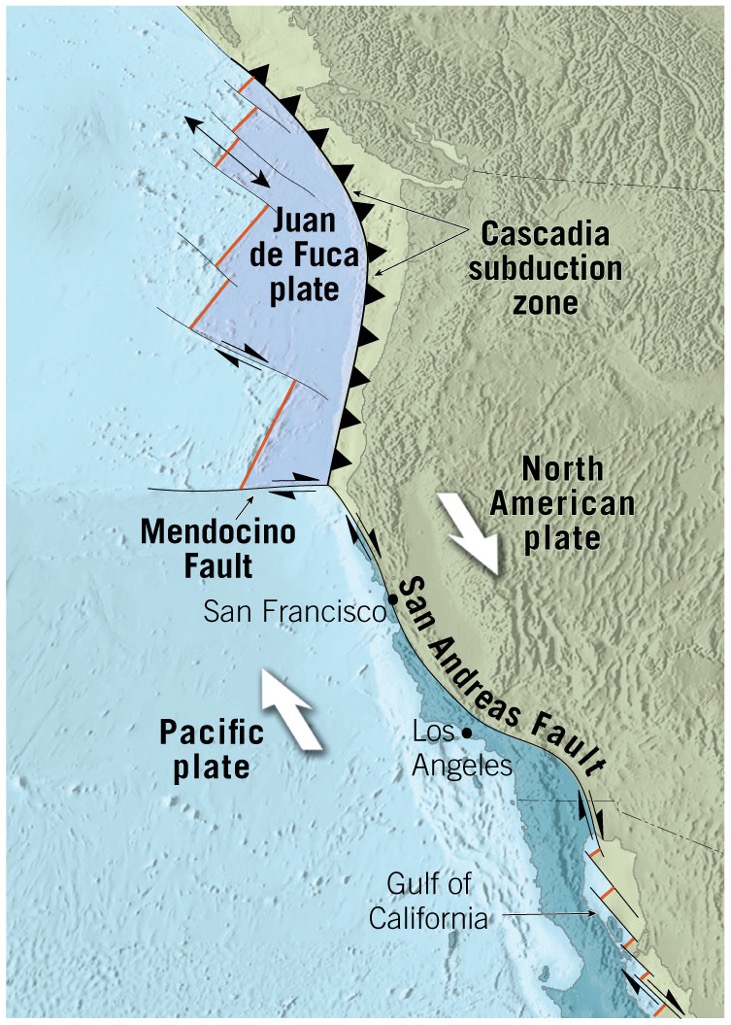
Will california fall into the ocean someday ?
false, but Los Angeles and San Francisco may become suburbs of each other
what is a convergent boundary?
plates "collide" in geologic time, there are three scenarios
what is subduction?
one older, colder plate slides under another
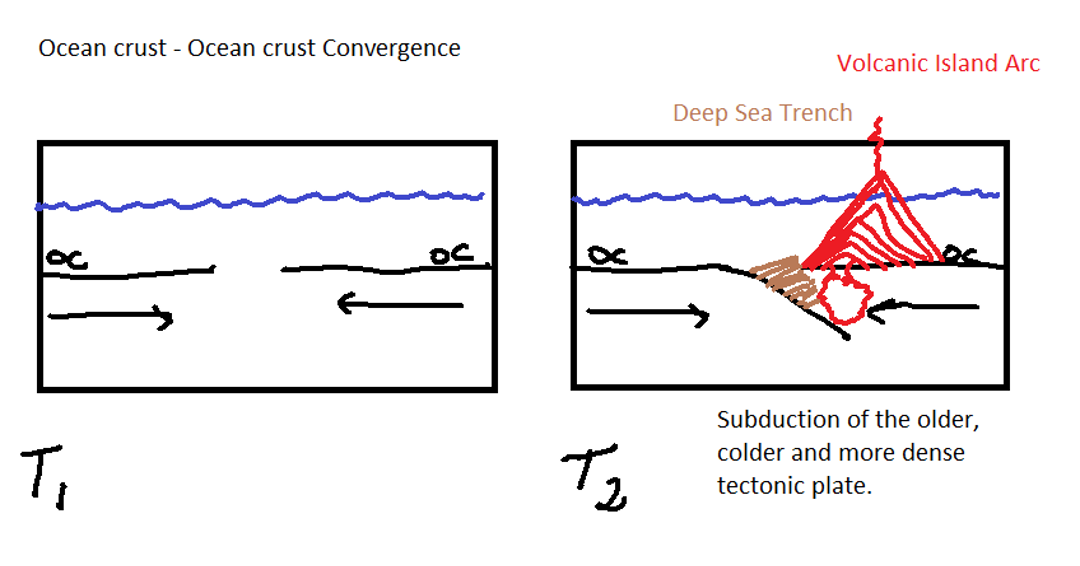
what happens in a ocean-ocean convergence?
formation of a deep sea trench, volcanoes on the ocean floor – become volcanic islands, EARTHQUAKES
where does ocean-ocean convergence occur?
Japan, phillipines, indonesia - these are volcanic island arcs
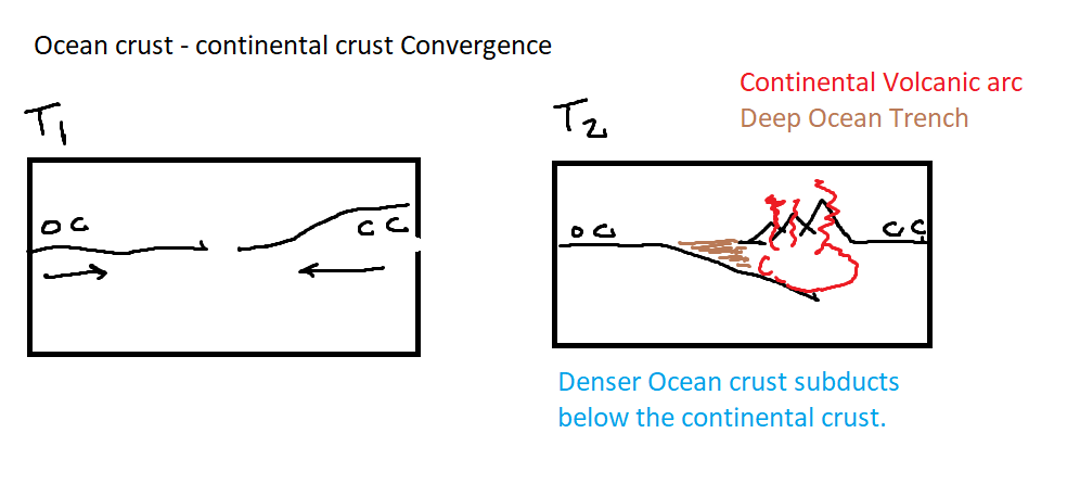
what happens in a ocean-continent convergence?
continental volcanic arc – volcanoes are on the land not the ocean floor, ocean crust gets subducted, earthquakes
where does ocean-continent convergence occur?
HO: andes mountains, BO: cascade mountains in Oregon, mountains in Washington - mt rainier etc
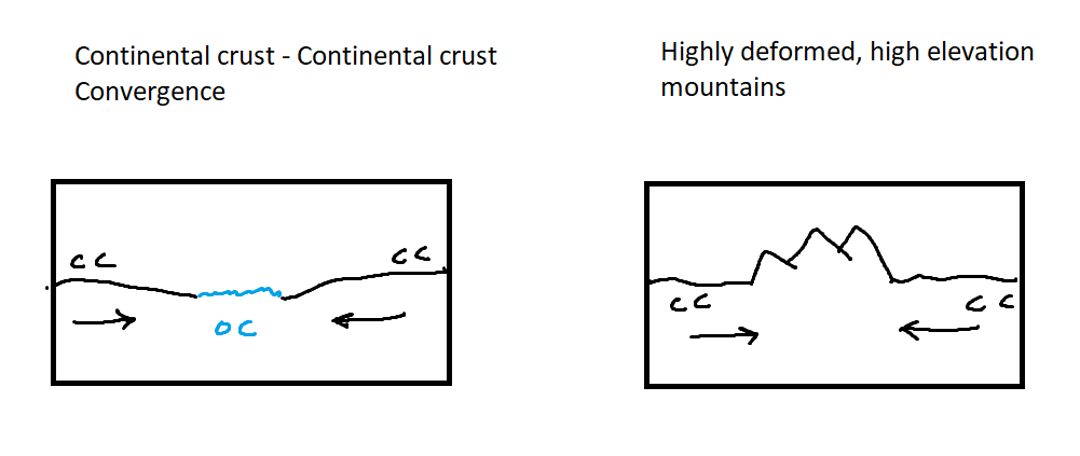
what happens in a continental-continental convergence?
Highly deformed, high elevation mountains – bc the only way the land can go is up, EARTHQUAKESS, no volcanoes
where does continental-continental convergence occur?
HO: Himalayas, BO: Appalachians and related mountains - so old they are not as tall as they once were
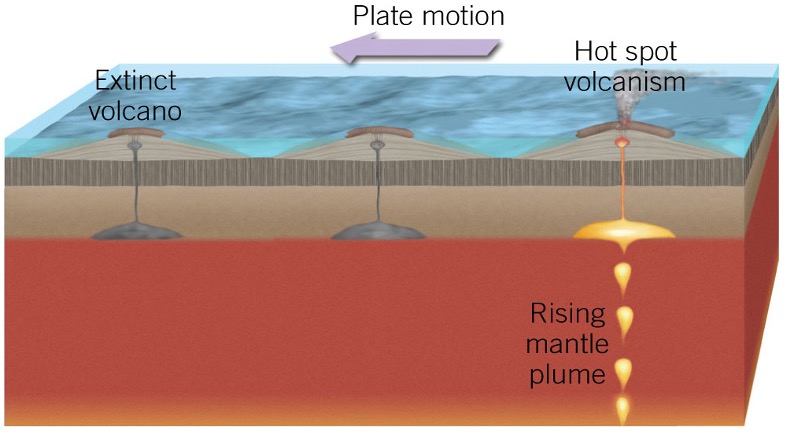
what are hot spots?
a thin area and then a break/breach forms in the interior of a plate, magma rises up through this break and accumulates on the ocean floor. If enough lava builds up, an island forms. The hot spot is the magma source in the mantle. As the plate continues to move, the lava accumulates in a different place. Sometimes the magma source stops for a while
How do the plates move? What is the mechanism?
convection in the asthenosphere
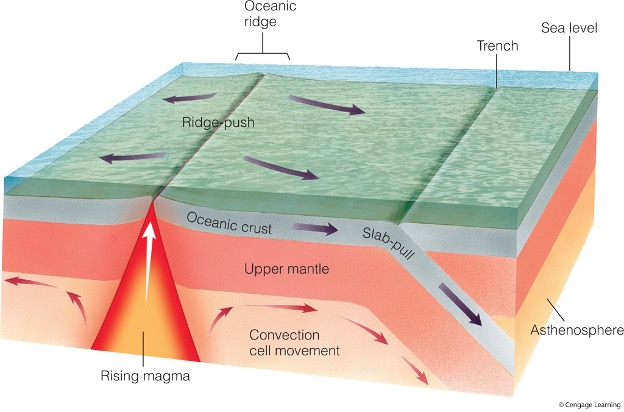
what is the slab-pull mechanism?
As dense slabs of ocean lithosphere subducts into the asthenosphere, gravity pulls the rest of the slab along with it
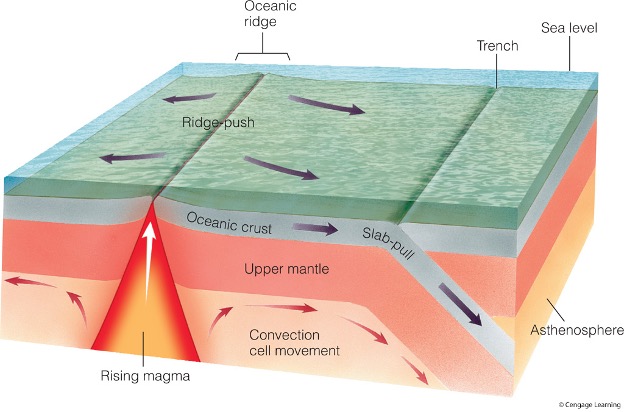
what is the ridge-push mechanism?
Recall that because it is hotter and less dense, the hot ridge material sits higher than the surrounding ocean floor. So gravity "pulls" the slab down off the ridge and it seems as if the ridge is pushing it off itself